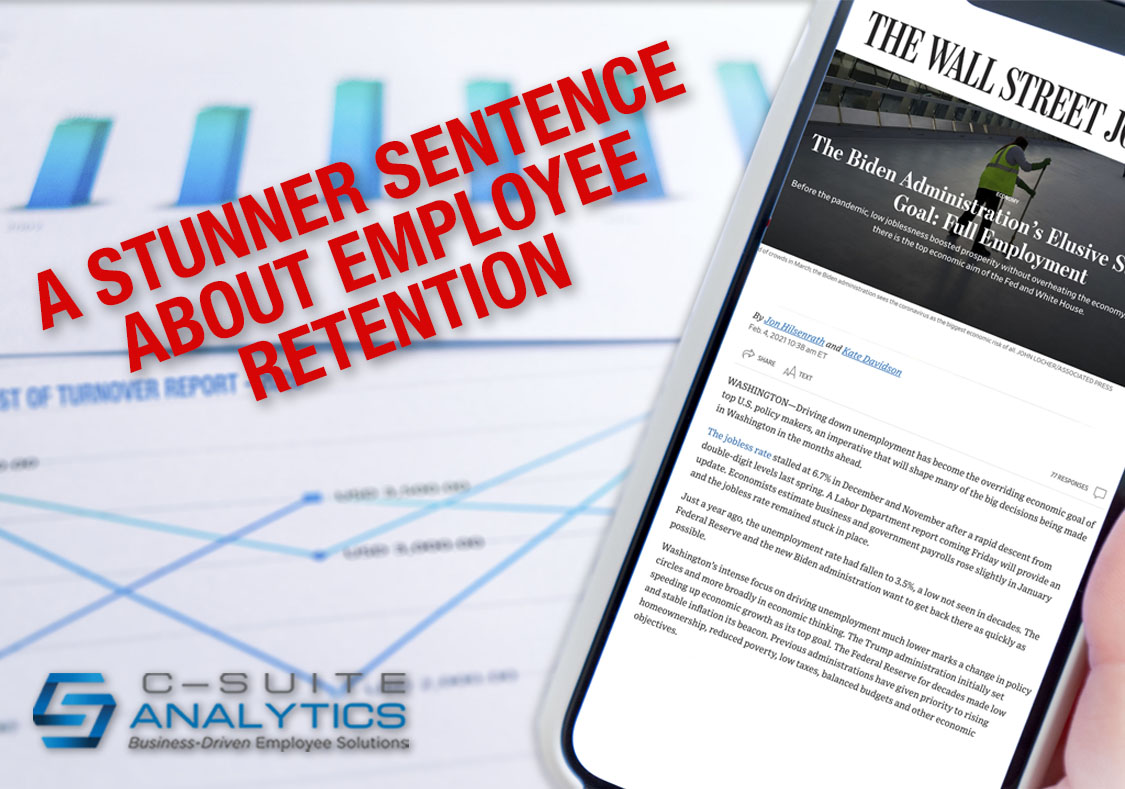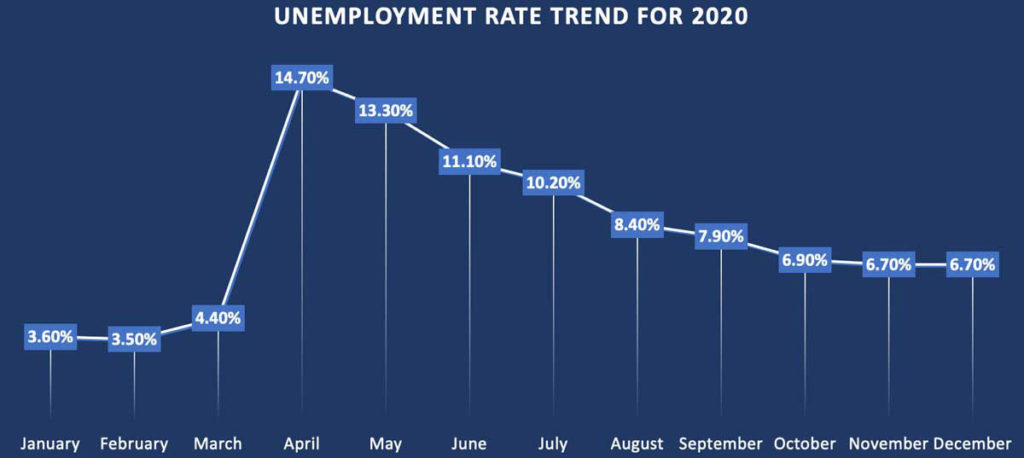Employee engagement hasn’t improved in 20 years—and Gallup says managers are the reason. Learn why corporate programs fail and what actually moves the needle.
The Wall Street Journal Stunner Fact About Employee Retention

It hit the newswire last Thursday at 10:38 AM…and those of you in Talent Acquisition or if you are in charge of hiring people, you had best beware. Here it is:
The $1.9 trillion proposal, even without the planned second round, would push the jobless rate as low as 3.2% in late 2021 and early 2022, according to a report from Brookings Institution economists Wendy Edelberg and Louise Sheiner.[i]
Less than 24 hours later after an all-night session, the Democratic-controlled senate passed a budget bill that paves the way for passage of the stimulus bill, backing the President’s statements that he will muscle the full $1.9 trillion plan through congress if need be.
Sitting here as an average news-hound, it looks likely the full stimulus will become law. This is not a column to argue if it should or should not, as my coursework for becoming a therapist didn’t include many economics classes. Like none.
But let’s put the possibility of our national unemployment rate falling to 3.2% within a year into perspective.
Remember way back when, before the pandemic, when it was hard to find qualified candidates for most jobs? That was February 2020, exactly one year ago, when our unemployment rate hit its floor of 3.5%. That rate then skyrocketed to 14.7% in April and then gradually slid downward and sits at 6.7% today. Here is our unemployment rate trend for the past 12 months:

Given how much turbulence the job market faced in 2020 when unemployment quadrupled over just two months, consider the off-setting turbulence that same market will face in 2021 if unemployment falls to 3.2% within a year. Or in less than a year.
And let us not forget that those who had jobs in 2020 were still job-hopping like rabbits, even during the pandemic-caused recession. As reported here several times, the percent of workers who voluntarily quit their jobs in recent months were just 10% fewer than their corresponding months for the previous year. Those numbers equate to a lot of unexpected staff turnover. Just one example is manufacturing where the Wall Street Journal recently reported worker shortages with this headline:
Low On Workers, Manufacturers Recruit Their Executives for the Factory Floor[ii]
Most economists predict some industries will return to full strength faster than others. If we presume that to be true and also that unemployment could reach 3.2% within a year, how hard will it be to find qualified workers in those “winning” industries, considering that some other industries will still be struggling so less likely to hire? If you are hiring workers for manufacturing, call centers, and technology, where will you find them? Or another consistently high-churn and highly-poached industry is federal contractors where engineers and other professionals have tight networks and can always find jobs because our federal government assures their contracts.
Or let’s redirect this discussion toward healthcare. I’ve always believed HR professionals in healthcare drew the short straws, my way of saying they have the toughest HR jobs. Not only must they find and retain “providers”, the trendy term for doctors, nurses, physicians’ assistants and others who provide direct medical services, but the strict credentialing for these jobs means they cannot identify star performers and promote them upward…without sending them off to school for a few years. And if I had to find qualified nurses or engineers, I’d rather be challenged to find qualified engineers. Good nurses rule the employment world.
So let’s shift our attention from the future to the present. A tidal wave of historically low unemployment is on its way. It seems funky to say that employee retention has never mattered more at a time when unemployment is 6.7%, but the data tells us this is so.
What to do? The greatest reasons why employees quit is what they talk about over dinner. Not what they report in exit surveys or structured employee surveys, but how they truly feel about the topics that most drive employee engagement and employee retention which are bosses, colleagues, and duties.
I popularized Stay Interviews to get to these boss/colleagues/duties issues, to smoke out those day-to-day nags that employees privately complain about and are usually easy to fix. First-line supervisors who must conduct Stay Interviews therefore impact retention and engagement the most and need the tools and training to both retain their teams and maximize their productivity. Try it.
Dick Finnegan is SHRM’s top-selling author and top-rated webcast presenter. Please email your comments to DFinnegan@C-SuiteAnalytics.com. You are also welcome to forward this blog to anyone you believe would find it helpful.
[i] https://www.wsj.com/articles/biden-fed-economy-covid-employment-inflation-11612451174
[ii] https://www.wsj.com/articles/low-on-workers-manufacturers-recruit-their-executives-for-the-factory-floor-11610168401



